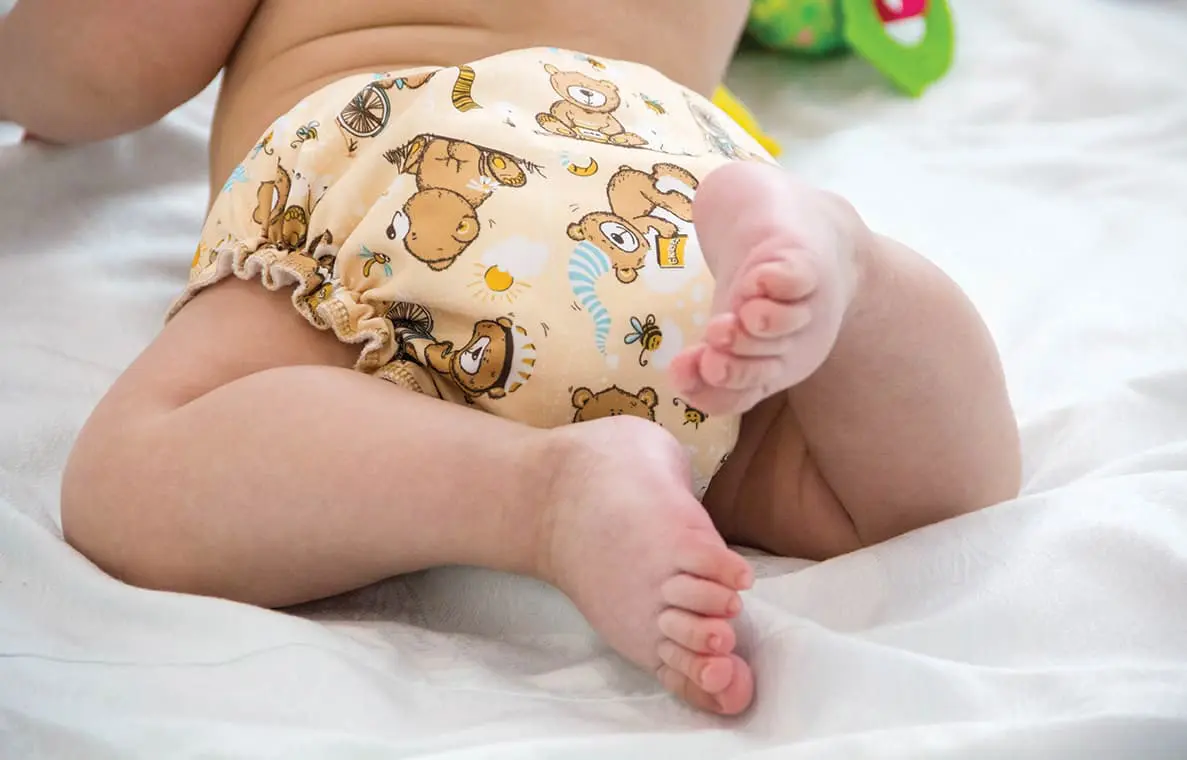By Poa Van Sickle
—
The information overload that comes with planning for your first child can be overwhelming. Add to that the logistics of life, and who even has the capacity for cloth diapering or early potty training? But while still the norm, disposable diapers aren’t a necessary “part of the deal.” More and more parents are turning away from disposable diapers and toward alternative options, whether it’s to lessen their ecological footprint, to ease financial burden, or to honor their baby’s hygienic needs.
Today, most parents don’t even start thinking about potty training until around age two, and it feels quite normal to have kids in diapers or pull-up training pants through age four and sometimes beyond. However, it was once the norm to have a kid out of diapers between 12 and 18 months of age. In fact, in 1957, 92 percent of kids were potty-independent by 18 months old.
What occurred over the last few decades to cause a shift?
As family structure began to change—with less family support at home and more moms in the workforce—our ideas and information about diapering and the diaper industry supported the use of disposables. While disposable diapers do add some level of convenience, they aren’t without cost. It takes about 7,000 diapers (that end up in the landfill) at a cost of around $1,500 to $3,000, depending on the brand, to outfit one kid in disposable diapers for 3 to 3 1/2 years.
So, what can working parents do?
Cloth diapering, even when implemented part-time, can immensely reduce the environmental and financial burdens of diapering. While the initial investment of cloth diapers (around $500) can be hard to swallow, the savings over a course of one or more kids pays off. Gently used cloth diapers can be purchased on eBay or Facebook yard sale pages at a fraction of the retail cost, and their lifespan is good for three to four children, depending on how they’re cared for. Plus, the ease of modern-day cloth diapers far exceeds the diapers of the 1950s, or even what was available just 20 years ago. Gone are push-pins and plastic covers. Now, you’ll find all-in-one diapers with adjustable snap closures that grow with your child and are ready to use straight out of the washer and dryer.
Another way to minimize diaper use, cloth or disposable, is to practice elimination communication, or EC, which involves starting pottying communication before your child is even verbal. Learning to cue into your baby’s elimination signals and patterns leads not only to you learning when she needs to go and being able to offer her the potty—even from a newborn age—but it also develops a relationship of trust and a better honoring of her hygienic needs. EC practices can be adjusted to accommodate your household’s personality and can be implemented full-time from birth or used once or twice each day until 18 months of age. The ideal starting age to practice EC is anywhere from zero to 5 months old and goes something like this:
First, learn your baby’s pottying cues and offer the potty when you know he will go. Then reinforce the experience with verbal cues as he’s going to the bathroom to teach about the idea of using the potty. It can be very simple and quite exciting when the communication begins to open up.
You might be thinking, Well, this all sounds good in theory, but it seems completely overwhelming to put into practice! Many parents cringe at the thought of dumping loads (pun intended) of diapers into the landfill each year but are paralyzed by the idea of cloth diapering on top of all the other responsibilities. Not to mention adding the extra burden of EC into the mix.
Enter local diapering and potty-training professional Kate Falk of Pottytunities in Jackson. Kate is passionate about educating and supporting parents on their diapering and pottying journeys, and finds solutions for each unique challenge that individual families face.
Kate offers something for everyone. She holds a free quarterly support group at various locations around town where she gives tips and answers questions. She offers potty-training classes two to three times each year where she teaches a structured yet gentle parent-led potty-training plan, giving parents the accurate information and confidence to train in 3 to 14 days. Falk also is available for one-on-one consulting sessions when she can customize either EC or conventional potty-training plans to the family’s individual situation and needs.
Doubts and fears about cloth diapering and EC abound, but it can be done. Take it from full-time working mom Neesha Zollinger, owner and instructor at Akasha Yoga, who raised her child by herself and used full-time day care: “I think the big thing to realize is that you don’t have to be perfect,” she says. “I used disposables when traveling. I let go of feeling like I needed to teach the day care EC cues. And I just did what I could.” She knows that parenting can be overwhelming enough and that we need to “allow ourselves to be good with ‘good enough’ and trust that our intentions will shine through the imperfections.” And, she says, washing diapers wasn’t complicated, and EC works even if your child care center doesn’t practice it.
Resources
—
- Learn more about Pottytunities’ support group, classes, and diaper bank program—a diaper-lending program for low-income families—at pottytunities.com.
- greenmountaindiapers.com offers many options of cloth diapers, wipes, and other accessories for purchase.
- Andrea Olson of godiaperfree.com offers an easy-to-use guide on practicing EC with your child.

